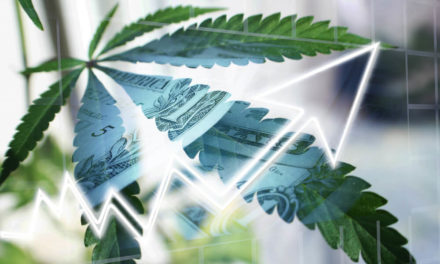A long time ago I made my peace with the machinations within the gold market. There are so many angles on who wants to manipulate gold that after a while any story you pluck out of thin air becomes plausible. So this week it could be the Fed or China or Russia or “the banksters” or freaking aliens at this point.
The longer gold languishes below the 2016 post-Brexit high of $1,375, the more these stories crop up. Frankly, I’m bored by them, no matter how much truth there may be in them. Because at the end of the day I have to believe that markets are bigger than men, otherwise what’s the point of talking about any of this other than as some form of masochistic therapy?
Gold is a hedge not against inflation or bond yields or any of that other stuff. It is a hedge solely against the loss of confidence in political institutions that back the fiat currencies against which it is measured.
All of the correlations between gold and interest rates, money supply figures and the rest only function within the parameters of a market convinced of future political stability. Once that future stability begins getting deep discounts by markets and those relationships falter, gold consolidates, bides its time and then pops spectacularly.
At that point the longs feel vindicated and the manipulation stories morph into why gold won’t go to $50,000 or some other thing to sell clicks.
So to look at the gold market as we close May, we have to assess that big picture and realize that gold is caught between two very large forces.
They are the collapsing confidence in major governments around the world, and the reality of falling dollar liquidity as represented by rising short-term rates and falling long-term rates.
Add to this President Donald Trump’s daily threats of tariffs and sanctions to derail a global economy already in trouble.
Against this backdrop and increasingly aggressive capital control coming from both the U.S. and the EU, the big story of the past couple of years in the gold market has been the wider demand coming from central banks, not just Russia. The Russians continue to buy at an ever-increasing rate, sometimes exceeding its own domestic production.
This week we saw both the Philippines and Serbia join in the list of buyers. It may not be much, but it’s indicative that those looking toward a future less reliant on the dollar need to be prepared.
In 2018, central banks bought 651.5 tonnes of gold, nearly 15% of total demand.
And that demand isn’t slowing down in 2019. If anything, it’s still rising.
As the dollar rises and gold remains trapped below the breakout level, central banks looking to protect themselves are finally seeking to diversify their holdings since their stock of U.S. treasuries is now at an all-time high according to the latest TIC Report from the Treasury Dept.
In Italy there is a story brewing behind the headlines of inter-party fighting in the wake of the EU election results. Back in February, a member of Matteo Salvini’s Lega tabled a bill to declare the country’s gold reserves as belonging to the people, not the Bank of Italy.
The unstated worry here is that in any budget fight between Salvini and the EU, the Bank of Italy could wind up being seized by the EU. Why? Because like the Federal Reserve, the Bank of Italy is privately owned, and the owners are the most vulnerable of Italy’s banks.
So with the ECB’s powerful bail-in powers, it could take the step of declaring, for example, Unicredit unsustainable on a Sunday night and sell it for a dollar to Deutsche Bank. It’s not like this hasn’t happened before or anything.
With the gold the property of the central bank and Salvini’s own finance minister, Giovanni Tria stating, “only the ECB can use Italy’s gold for its monetary policy maneuvers,” you can see why this issue is so important if Salvini tries to take Italy out of the euro or issue a parallel currency internally — both options he needs to leave on the table to fix Italy’s economy.
This issue seems to be off the table now, but it will come back with a vengeance if things between the Italians and the EU heat up as we get close to budget time in September.
Then there’s Prime Minister Mahathir Mohamad in Malaysia saying it’s time for a gold-backed regional trade currency to use between the countries of Southeast Asia because of its stability versus the U.S. dollar.
This is a direct attack on Trump’s endless weaponization of the dollar as a means to achieve geopolitical goals.
He’s become like the Soup Nazi from Seinfeld: “No Dollars for you!”
Patience around the world is wearing thin.
And thanks to Trump’s belligerence (and frankly ignorance) on trade issues, he’s got a falling stock market and a deepening yield curve inversion that is signaling, “Recession! Straight ahead!”
In this type of environment, it is no wonder that gold is unsure of what to do. With the world synthetically short dollars to epic proportions, all rallies in gold are still sold as a means to procure dollars without upsetting other Forex markets.
Up until the last day of May, the safe-haven flows have all been into the bond markets because they can be posted as collateral while gold still floats at a discount. As well there was this belief that Trump wasn’t completely off his rocker and would eventually cut a trade deal with China.
But with his insane demand of a 5% per month rising tariff on Mexico to get the border under control the markets are now coming to terms with the fact that there is a true mad man in the White House.
Between Mohammad’s call for a new gold-backed trade currency, falling equity prices worldwide, a rising dollar against everything except the Japanese Yen, the recipient of carry-trade unwinds as the pound and euro freefall, and Trump’s pandering to his base on Mexico, gold finally put in a definitive statement that it still functions as a check on global unrest versus just being a plaything for the Forex markets, rallying more than $30 over the last two days in May.
Part of the reason gold has languished has been the relative strength of the equity markets. The capital flight out of Europe took the early form of stronger U.S. equity performance versus European indexes like the German DAX or the British FTSE 100. This has suppressed safe-haven flows into gold as the dollar rose.
But now that the yield curve is screaming recession, economic data and corporate profits signaling we’ve reached the cycle peak, the Fed will have to lower rates at the next meeting, if not beforehand. And that should light a further fire under gold and propel it back toward the breakout level of $1,375 and probably beyond.
• Money & Markets contributor Tom Luongo is the publisher of the Gold Goats ‘n Guns Newsletter. His work also is published at Strategic Culture Foundation, LewRockwell.com, Zerohedge and Russia Insider. A Libertarian adherent to Austrian economics, he applies those lessons to geopolitics, gold and central bank policy.




